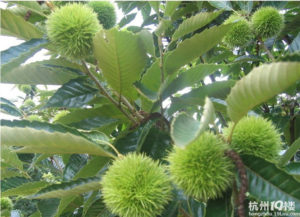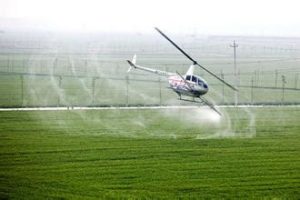High – yield Cultivation Techniques of chestnut
Chestnut is deciduous trees, the height of chestnut is up to 20 meters and its high life is up to hundred years. After 4-8 years growth, the chestnut trees will be strong , after 15 to 16 years will get into the fruit period as well as after graft breeding 2-3 years, will start to have fruit, after 4-8 years, will get into the fruit period. In addition, if the chestnut trees are kept in good management conditions, the fruit period can be maintained for 50 Years or more.
(A) Nursery stock selection
Before planting, we need to choose high-quality seedlings which the height of the plant should be 70mm and the diameter should be 0.7cm, in addition, the development should be normal and the plant should be disease-free. The transfer seedlings should pay attention to proper packaging, to prevent root dry or mechanical damage.
70mm and the diameter should be 0.7cm, in addition, the development should be normal and the plant should be disease-free. The transfer seedlings should pay attention to proper packaging, to prevent root dry or mechanical damage.
(B) Cultivation period
Spring planting should be in the seedlings period that means it should be in the middle of March. The autumn planting should be carried out after the seedlings fallen leaves, but the higher area suit for spring planting mainly.
(C) Planting distance
The soil is very fertile, slope is gentle, spacing can be 5-7m, 20-30 plant seedlings per mu, medium range spacing can be 4-6m, 30-40 plant seedlings per mu. The row spacing of soil shallow area or barren mountain slope is 3-4m, 40-60 plant seedlings per mu. However, the intensive also can be 2 × 2m or 3-4m, 4-4m, 6-8m.
About hole planting, the size of the hole size can be 40 × 40cm. Apply 3-5kg organic fertilizer and mix with soil, and then covered a layer of 5 to 10cm soil on the ground and then plant seedlings on it. The new developed chestnut garden always use grafted seedlings, but it can also be planted seedlings after the local grafting. The advantages of seedling growth is fast, seedling period is short, low cost, but the disadvantage of seedling transport is time lost. Therefore, we usually choose grafted seedlings because the seedling period is long after a long period of transplanting. In addition, the root callus capacity of grafting seedlings is weak, so that we should be careful when we get the seedlings and the seedlings should be evenly stretched, seedlings should be right so that make the fine soil penetrate into the root gap. Then, filling compaction, so that the soil in close contact with the root, and then pour water to the root.
we usually choose grafted seedlings because the seedling period is long after a long period of transplanting. In addition, the root callus capacity of grafting seedlings is weak, so that we should be careful when we get the seedlings and the seedlings should be evenly stretched, seedlings should be right so that make the fine soil penetrate into the root gap. Then, filling compaction, so that the soil in close contact with the root, and then pour water to the root.
According to different age, different regions, soil conditions and management level, to appropriately adjust the proportion of nitrogen, phosphorus and potassium fertilizer. Weak trees, the adult trees with a large number of fruit should apply more fertilizer.
The amount of nitrogen, phosphorus and potassium should be aplied per mu
| Age | Nitrogen Fertilizer | Phosphorus Fertilizer | Potassium Fertilizer |
| 1 – 3 years | 0.67-1.33 | 0.67-1.33 | 0.67-1.33
|
| 4 – 6 years | 2.0-2.67 | 1.33-2.0 | 2.0-2.67
|
Fertilization three times a year, the first time is in the early spring (mid-February), to apply fertilizer to promote flower growth, the second time (early June to early July) is to apply fertilizer to have more fruit, the third time (end of September to October)is to apply fertilizer after fruit harvest.
2, Digging hole, weeding grass.
Each year, when the winter coming, dig hole can not only destruct the place of pests, but also improve the soil quality and reduce the evaporation of soil moisture.
3, Pruning
The pruning is one of the main technical measures for the high-quality of the chestnut tree. The chestnut tree is dominated by the natural heart shape. After the garden is built, the winter cut, the topping, the wiping bud and so on are necessary.
4, Wiping buds
For the strong growth trees, we need to wipe on the branches.
5, Pest control
Due to the strong adaptability of chestnut, the pests and disease also are widely distributed. Therefore, we should find the pests and disease timely and have timely treatment.
Previous: What are the radiation-resistant plants?
